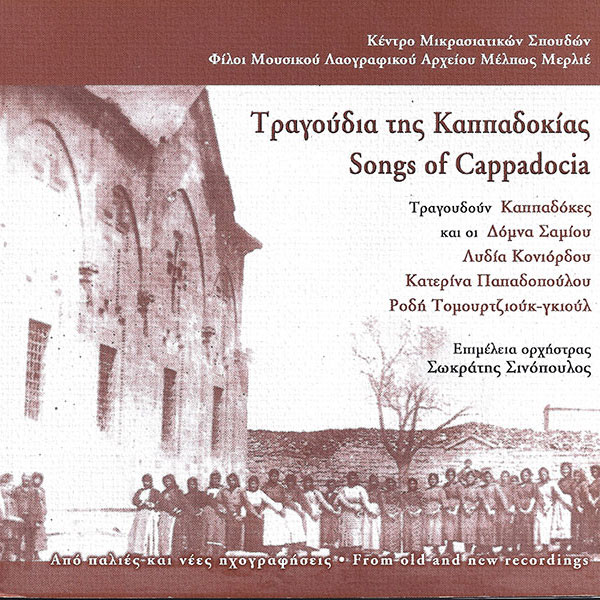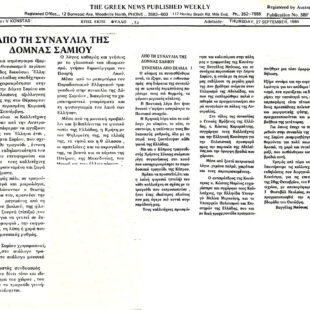00:00
Home / Her Work / Song Catalogue / St. George and the Dragon
Αγιώρ’ Αγιώρ’ αφέντη μου

Αγιώρ’ Αγιώρ’ αφέντη μου κι αφέντη καβαλάρη
Αρματωμένε με σπαθί και με χρυσό κοντάρι
Άγγελος είσαι στη θωριά, κι άγιος στη θεότη
Παρακαλώ σε βόηθα μας, άγιε στρατιώτη
Από το άγριο θεριό, το δράκοντα μεγάλο
Που δεν αφήνει άνθρωπο κάθε πρωΐ και άλλο
Ερίξανε τα μπουλετιά1 σε μια βασιλοπούλα
Οπού την είχε η μάνα της μία και ακριβούλα
– Σήκω Αγιώρ’ αφέντη μου, και το νερό αφρίζει
και δράκος τα δοντάκια του για μένα τ’ ακονίζει
Σηκώθηκεν κι Αγιώργιος σαν παραλογισμένος
Μια κονταριά το χτύπησεν σαν που ήταν μαθημένος
Μια κονταριά το χτύπησεν, το πήρε μες στο στόμα
Και παρευτύς το ξάπλωσε χάμω στη γης στο χώμα
Γεώργιο με λέγουνε κι απ’ την Καππαδοκία
Κι αν θες να κάνεις χάρισμα, χτίσε μιαν εκκλησία
Βάλε δεξιά την Παναγιά, ζερβά έναν καβαλάρη
Αρματωμένο με σπαθί και με χρυσό κοντάρι
1μπουλετιά: κλήρος
St. George’s song was sung on the day the saint was celebrated, but there was no dancing involved. Furthermore, its lyrics were printed in a book. According to the woman who sang it in 1930, “the school-girls went to houses where there was a George in the family and while singing collected small sums of money. But in general the inhabitants of Sinasós do not retain any such memory, except that it was sung at evening parties. The subject of this song, referring to a dragon that blocks the water supplies in a particular area, is familiar, to the traditions of other countries too. The dragon demands to devour a princess, in order to unblock the water supplies. In the Greek tradition, St. George kills the dragon and thus releases both the princess and the water supplies.
Time signature: 7/8
Mode: Diatonic D with subtonic present. Degree VI fluctuating.
Studio recording, 2001. Based on the original recording of 1930 by Melpo Merlier, founder of the “Music Folklore Archive” of the “Centre for Asia Minor Studies”.

Singers

Violin

Constantinopolitan lute

Bendir (frame drum)

Informant (source of the song)